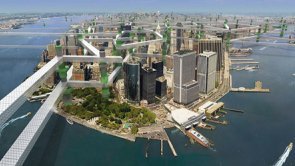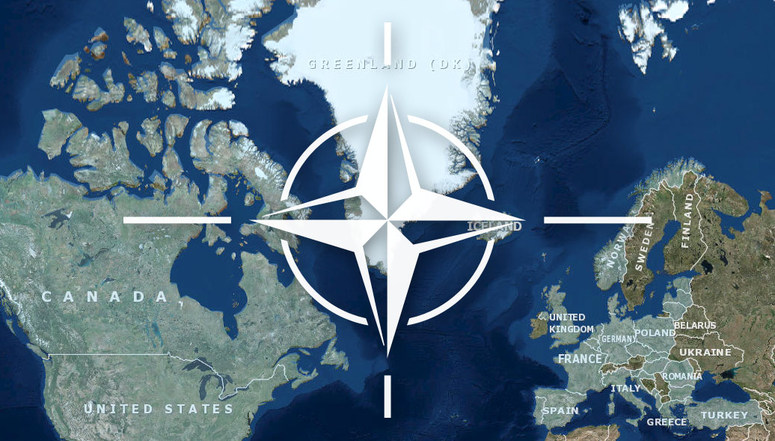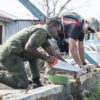Presented by Mr E. van de Bospoort at the 10th International Lessons Learned Conference (10ILLC) dated 17 May 17.
The CIMIC, or CCOE as we call it, provides CIMIC training. We are also the department head and it is responsible for CIMIC doctrinal publications where we have the custodial law.
What I want to share with you this morning is my experience of participating in the NATO urbanisation project. The CCOE participated for two reasons.
First, to give the planners the CIMIC perspective in the experiment. And, as we heard during yesterday’s presentations, that isn’t always an easy task.
Second, we wanted to know if CIMIC itself would be ready for those future urban operations.
Presenting today is quite a challenge. I’ve only got 15 minutes, so my social editor told me to read my speaking notes. But foremost, I’m biased on the topic, and I think that counts for most of the people here in this room. Why? Because I was not born in the developing world. I do not live in a city and worse, I have the tendency to look at issues from a military perspective. Nevertheless, I will give it a swing with the following slide plan.
I first start with a quick introduction of urbanisation. What is it and why does it matter? This might be handy since talking about urbanisation in a mega city of Queenstown can be a challenge.
How can we learn a lesson from something that has not yet occurred? How do we plan for the future?
And the second part, I’ll describe the tools we used during the experiment. This will be the main part of the presentation.
And finally, how valid are the lessons CIMIC has learnt over the past decade for operations in Iraq and Afghanistan when it comes to facing that urbanised future.
In the annual world urbanisation prospect, the UN predicts a growth of 2.4 billion people in the next generation. In 2035, about 62% of those people will live in cities, particularly in the lower/middle income countries where the pace of urbanisation is fastest.
Now, urbanisation in itself is not bad and it offers also opportunities but not all cities will be like the future version of New York City.
Many of those people will go into under‑governed, under resourced and over stretched cities. This is a recipe for conflict and crime and might result in governance, health and public order issues or, as Mike Davis calls it, a planet of slums.
Like the UN, also NATO does horizon scanning with their strategic foresight analysis. It identifies strengths that will shape the future strategic context and, from these trends, derives defence and security implications for the alliance. The framework for future alliance operations supports NATO’s transformation in defence planning efforts. The ten identified instability situations are particularly useful for Force modelling scenario and capability development.
Combining the SFA with the FFAO results in the following challenge. The increased likelihood that NATO needs to operate in an urbanised environment. And the question is, are we ready or do we need to transform? This is a wicked problem that is not easy to solve.
One of the tools NATO uses to frame wicked problems is concept development and experimentation. In 2014, the CD&E project urbanisation was initiated with the aim to examine the impact of urbanisation on NATO. The scope of this conceptual study and experiment was to examine current and future capabilities in a full spectrum urban operation in order to provide recommendations for future concept development and insights for a joint urban doctrine.
The project started with a literature research and SMEs, both academics and practitioners were challenged to provide their insights with research papers. Based upon these results, two war game experiments were constructed. The first focusing on the humanitarian assistance and disaster response operations and the second on high intensity conflict operations. I will explain in more detail how we constructed the 2035 future of the second war game experiment.
How can you learn from the future? One of the best ways is to run a table top exercise with SMEs based upon possible scenarios you might face in that future. We developed a state to state conflict scenario for the year 2035 where NATO partnership for peace city state was invaded by its neighbour. A joint brigade sized NATO response force was confronted with one of 3 vignettes which needs to be tackled by four joint planning teams, three with conventional planners, J1 to J9, and a city planner and a renegade planning team with civilian students, the so‑called millennials we discussed yesterday.
First, they had to confront the 2035 threat vignettes with 2016 capabilities to identify current capability gaps.
Then they could select a couple of the 40 improved capability cards, ranging from remote C2, autonomous ISR and delegated authority for CIMIC and info ops in order to close those gaps. Both courses of actions were war games with a challenge brought to identify shortfalls. This part consisted of green and white civilian SMEs amongst a gender SME and then the red team would provide a 2035 equipped with both regular and irregular troops that could simultaneously strike through the full breadth and depth of the urban matrix.
Finally, after each war game vignette, the analysis team would do a survey of how successful and useful the different CoAs and capability cards were assessed by the planning teams and the challenge board.
To support the planning teams in executing their task and to keep them on track, we made use of a model designed by the Model and Simulation Centre of Excellence in Rome. And for the 2015 first experiment, this tool wasn’t used that much due to a lack of detail. Most baby boom planners still wanted their paper maps.
For 2016, the second experiment, the model was improved with a detailed PMESII structured layout and the use of paper maps was forbidden. However, it was not usable yet. It remained a static model with the core focus on stuff you can count and measure but how do you model population behaviour?
During the several planning conferences, we found out that the social layer needed refinement. It was not giving enough understanding about how to stabilise the city security ego system. Since the goal of many interventions, most of the military intervention, is to restore an acceptable form of stability in the urban littoral, then from a future doctrinal point of view we don’t have the resources to occupy and control a mega city. But the good news, let’s hope it won’t be necessary. The idea is to control by flow interventions and not by occupation but how to do this in the very complex environment of the city as a system?
Just like the adversary, you have to look for nodes in the urban nodal system that we need to protect or to influence to get the desired effects. So, planning and execution actions requires insight and understanding in the factors determining the flows that contribute to urban resilience.
We, therefore, refine to the social layer with 12 resilience factors that contribute to the five societal capitals of the city and, at first glance, number 4, reliable and effective security system, and number 11, perceived safety and security are the military’s main concern. But military actions will also impact the other resiliencies like essential services provisioning as well.
I will now show two quick examples of how this would look like for a planner. This slide shows the government’s ability to deliver essential services to its population and to effectively respond to system stressors. It indicates no go and ungoverned areas and might suggest areas to avoid or to improve.
This slide shows the quality of the physical infrastructure and the organisation to manage it. It covers a broad range of services like transportation networks, public transport, power supply, schools, teachers, water supply, healthcare services and emergency response. The only thing we still needed was a feedback mechanism to show that the impact of military actions on the resilience factors in order to refine the suggested CoA.
For this purpose, we made use of a tool called Marvel. It was designed by the Dutch Centre for Applied Science, TNO. Although it looks a bit like the spaghetti incident from McChrystal, it proved to be very helpful.
At the bottom in the blue boxes are the different forms of military actions and they will have either a positive or a negative impact on one or multiple actors. Those actors will impact the green boxed resilience factors, one or multiple of the 12, who will impact the purple boxed societal capitals and the change of the societal capital will have an impact on mission success.
Those relations can be time delayed or vary in strength. The following slides show very briefly how combat operations first, second and third order effects will impact either positive or negative the resilience of the city.
In the blue box, you will see the combat operation will have an effect on multiple actors, either green or red. And you can get to the second order and even the third order effect and you can click to seventh order effects but then everything is influencing everything.
The outcome of the Marvel model was then displayed in the previous mentioned model to illustrate whether the resilience of a district would improve or not as a result of NATO or red team actions. And of course both models are only a simplification of reality but they supported the decision‑making by the planning teams.
The results of both experiments are captured in two reports that were presented to the Military Committee of NATO. They contained more than 30 recommendations, how to transform the lessons identified into lessons learned. Besides the obvious need for further development of the joint urban concept, both reports acknowledge the fact that in future urban operations the alignment, co‑ordination and corporation with non‑military actors, and I nicked this yesterday from Dr Alan Ryan, is paramount.
This brings me to the so what for NATO CIMIC. Are we capable of supporting this federated effort? Is CIMIC in this 2035 urban environment still capable to deliver the desired effects that are mentioned in our doctrine? We identified three lessons that we need to learn in order to transform NATO CIMIC into the next decades.
First, to understand the city and its needs, we need urban specialists like city planners and emergency response specialists. If we look at the composition of our provincial reconstructive teams in Iraq and Afghanistan, we need to transform this concept into an urban version.
Second, the compressed environment of the city and its complexity will require more Civil Military Interaction at all levels of command and with all relevant agencies or societal organisations. This will require either more CIMIC capacity or a better understanding of the human domain by non‑CIMIC personnel.
Third, one of the major lessons identified is that our campaign must be able to operate at the speed of the problem to win the battle of the narrative. Besides delegated info ops authorities, this also requires the same speed of understanding of the local civil environment.
I will return to the theme of this section, how do we plan for future operations? In this presentation, I showed you that this requires strategic foresight. It also requires 21st Century tools and don’t worry how to operate them, again the millennials will take care of it.
And last, it needs an enduring need to connect with our non‑military partners.






